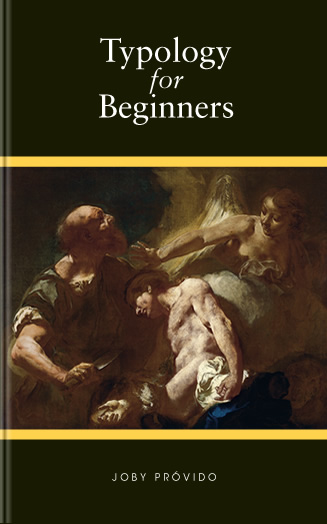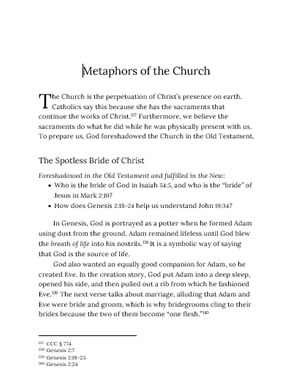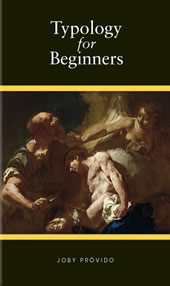Sometimes the overall patterns that connect the Old and New Testament together are so subtle it is difficult to see them if they aren't pointed out. But when it is made apparent, a beautiful tapestry lies beneath the layers of text.
Typology for Beginners helps make the connections vivid so we can better appreciate what Scripture is trying to tell us.
THE BOOK
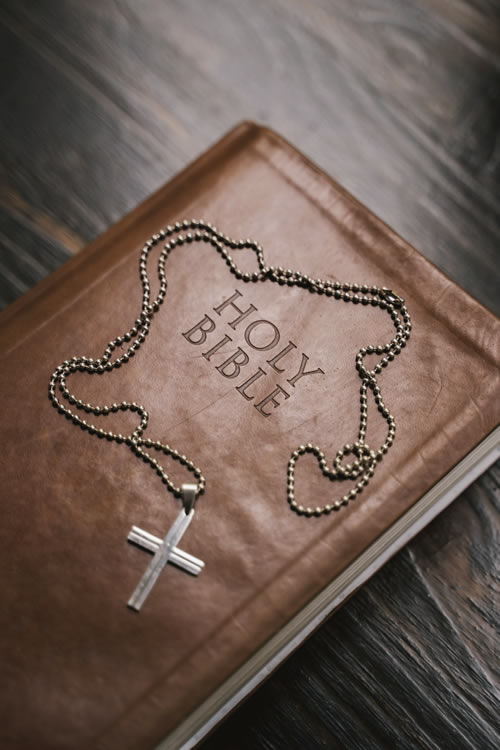
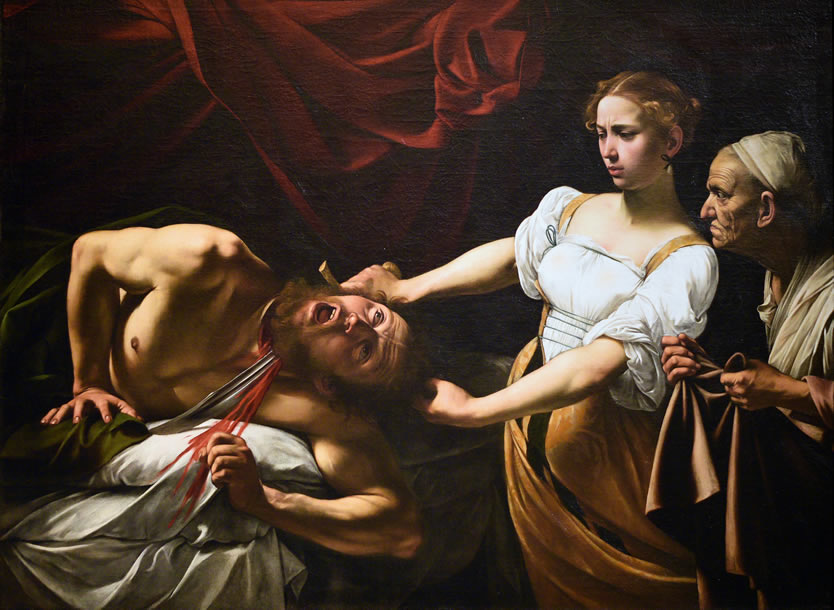
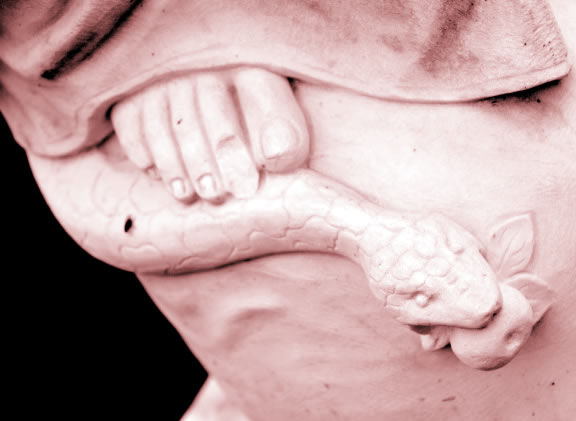

Uncover the patterns that connect the Old and New Testaments
First-century Jews converted to Christianity in droves because they understood Jesus fulfilled what was foreshadowed in their Sacred Scriptures. Because the Greek Septuagint version of the Old Testament was so Christocentric, they could easily see Jesus as the Paschal Lamb, the Last Supper as a new Passover, and Mary as the Ark of the Covenant.
Other stories, too, such as the story of Jonah and the large fish, Jael and Judith, Rahab the prostitute, Boaz and Ruth, Noah’s Ark, the crossing of the Jordan, and the water from the Rock that Moses struck – were all seen as pointing to Christ, Mary, the Church, and the Sacraments. This would have been exciting for them because they had waited for the Messiah for over two thousand years, and they were convinced Jesus is God to the point of even dying as martyrs during the various Christian persecutions.
Sadly, we no longer see these connections today; they are still there, but no one’s pointed them out to us. The document Dei Verbum (Word of God) from Vatican II recommends we read the Bible also typologically, but if no one shows us how, we might not be able to see the connections.
This book comes to the rescue by revealing the patterns that the early Christians saw. It will undoubtedly open a new way of reading the Bible so that it is exciting again.
READ THE WAY YOU WANT
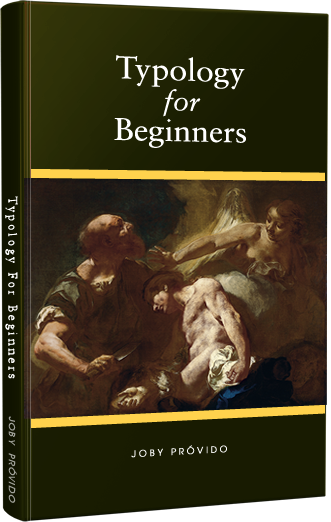
| Paperback | ||
|---|---|---|
| ISBN 13 | 979 855 43 4232 5 | |
| ASIN | B0BQ9MBLWM | |
| Publisher | Kindlings Press | |
| Publication Date | December 21, 2022 | |
| Language | English (American) | |
| Size | 6" x 9" | |
| Pages | 183 cream | |
| Cover | Full color, matte-finished | |
| BUY ON AMAZON | ||

| Hardbound | ||
|---|---|---|
| ISBN 13 | 979 837 06 5775 7 | |
| ASIN | B0BQ9RBN2Y | |
| Publisher | Kindlings Press | |
| Publication Date | December 21, 2022 | |
| Language | English (American) | |
| Size | 6" x 9" | |
| Pages | 183 cream | |
| Cover | Full color, matte-finished | |
| BUY ON AMAZON | ||

| Kindle Ebook by Amazon | |
|---|---|
| File Size | 787 KB |
| ASIN | B0BQRGT5MX |
| Publisher | Kindlings Press |
| Publication Date | December 20, 2022 |
| Print Length | 205 pages |
| Language | English (American) |
| Text-to-Speech | Enabled |
| X-ray | Not Enabled |
| Word Wise | Enabled |
| Enhanced Typesetting | Enabled |
| Sticky Notes | On Kindle Scribe |
|
Download the free Kindle App and start reading today. |
|
| BUY ON AMAZON | |
Now an AUDIO BOOK you can listen to!
Listen as you drive, workout, or bask under the sun.Excerpts
Introduction
On the road to Emmaus, two of Christ’s disciples talked about the Passion. Jesus joined them, “but their eyes were prevented from recognizing him.” When Jesus asked what they were discussing, they became downcast as they ran down a list of events that had happened, beginning from how they expected that he was the Messiah, to the Crucifixion, to Christ’s missing body in the tomb. It would seem they had just uttered facts about Christ’s life without understanding the Resurrection.
Christ said, “Oh, how foolish you are! How slow of heart to believe that prophets spoke! Was it not necessary that the Messiah should suffer these things and enter into his glory?” Then beginning with Moses and all the prophets, he interpreted to them what referred to him in all the scriptures. The lesson we get from this episode is that when we read Scriptures in the light of Christ, vague Old Testament writings become clear.
This same idea is expressed in the Book of Revelation. When the visionary describes scrolls locked with seven seals, he is on the verge of tears because no one could unlock them. It is an allegory for how the meaning of Scripture (in the form of scrolls at that time) was so difficult to understand. Only the Lamb, which seemed to have been slain, could open them. The message of that revelation is that Christ, the Lamb of God, is the key to decoding the hidden meaning of Jewish Sacred Scripture.
Saint Augustine expressed this in another way. He said,“the New Testament lies concealed in the Old, the Old lies revealed in the New.”
Sometimes, we get this when a prophet says something obscure, but it becomes clear when applied to Christ. In the 53rd chapter of Isaiah, for example, the prophet describes a suffering servant who was “pierced for our sins, crushed for our iniquity… It was the Lord’s will to crush him with pain. By making his life as a reparation offering….” Today we know these verses refer to Christ, but for those who were reading them before the time of Christ, it must have been unclear to whom the words of the prophet were referring.
Another example is Psalm 22 that starts with “My God, my God, why have you abandoned me?” Read in isolation from Christ, it is just a description of someone crying out for help. But when it is put on the lips of Christ during the Crucifixion, every word of the rest of the Psalm fits perfectly with what happened in the context of the Passion. How can we not see it as part of God’s plan of our salvation that he had slowly revealed from the beginning of creation?
Direct references like these are one way that links the Old and New Testaments. Another and subtler way the Old and New Testaments are connected is through typology. The Catechism says, “The Church, as early as apostolic times, and then constantly in her tradition, has illuminated the unity of the divine plan in the two testaments through typology, which discerns in God’s works of the Old Covenant prefigurations of what He accomplished in the fullness of time in the person of His incarnate Son.”
Typology is the study of types and symbols in Scripture. The word type comes from the Greek tupos, which means “imprint.” The print is called the type, while the instrument that made the imprint is called the anti-type. The typewriter is aptly named because when the metal letter keys strike an inked ribbon, it marks the paper behind it. The mark on the paper is a type, and the metal key that made it is the anti-type.
Types of Christ
Many people in the Old Testament are clear types of Christ. These are Melchizedek, Moses, Joseph the patriarch, Jonah, Elisha, David, and Solomon.
Melchizedek
Foreshadowed in the Old Testament and fulfilled in the New:
- How is Melchizedek in Genesis 14:18 like Jesus in Luke 22:19-20?
- When God adopts a king as his “son” in Psalms 110:3, how is the king like Christ in Psalms 110:4?
When Abraham returned from his battle with Chedorlaomer, Melchizedek came out with bread and wine and blessed Abraham. Scriptures indicate he was the king of Salem and “a priest of God Most High.”
In Psalms 110, Melchizedek is mentioned again. The Psalm is about God assuring the king of victory over his enemies. The verse, “Yours is princely power from the day of your birth. In holy splendor before the daystar, like dew I begot you,” describes how the king is made God’s son in traditional adoption language. The king is also said to be “a priest forever in the manner of Melchizedek.”
When we consider Jesus as king and priest, we see how Melchizedek prefigures him. The connection is made stronger by the bread and wine offered by Melchizedek, the same two substances Christ changed into his body and blood in the Last Supper that we offer in every mass today.
Another clear association is how the king in the Psalm is a king like Melchizedek, who is a “son of God” to Christ, the literal Son of God.
In his letter to the Hebrews, Saint Paul also explains how Christ is “raised up after the likeness of Melchizedek.”
Moses
Foreshadowed in the Old Testament and fulfilled in the New:
- How is Moses like Christ in the following verses?
Exodus 1:8-3:22
Exodus 7:14-24
Exodus 17:1-7
Exodus 17:8-16
Exodus 20:1-23:33
Exodus 34:28
Exodus 34:29-35
In the Old Testament, God dictated the laws to Moses, giving them to the Israelites. Moses was the lawgiver. In the New Testament, the Gospel of Matthew presents Jesus as a new Moses by becoming the new lawgiver.
In Matthew, we read about how the minions of Herod hunted Jesus. This is the start of many parallelisms when we read that the Pharaoh in the time of Moses wanted to massacre all the male children just as Herod wanted to do in Bethlehem.
It was Miriam, the sister of Moses, who ensured he was safe from this massacre. At the same time, it was Mary with her husband, Joseph, who kept Jesus safe by fleeing to Egypt. This connection is appreciated more when we learn Mary’s name in Hebrew is “Miriam.”
Metaphors of the Church
The Church is the perpetuation of Christ’s presence on earth. Catholics say this because she has the sacraments that continue the works of Christ. Furthermore, we believe the sacraments do what he did while he was physically present with us. To prepare us, God foreshadowed the Church in the Old Testament.
The Spotless Bride of Christ
Foreshadowed in the Old Testament and fulfilled in the New:
- Who is the bride of God in Isaiah 54:5, and who is the “bride” of Jesus in Mark 2:1
- How does Genesis 2:18-24 help us understand John 19:34?
In Genesis, God is portrayed as a potter when he formed Adam using dust from the ground. Adam remained lifeless until God blew the breath of life into his nostrils. It is a symbolic way of saying that God is the source of life.
God also wanted an equally good companion for Adam, so he created Eve. In the creation story, God put Adam into a deep sleep, opened his side, and then pulled out a rib from which he fashioned Eve. The next verse talks about marriage, alluding that Adam and Eve were bride and groom, which is why bridegrooms cling to their brides because the two of them become “one flesh.”
Making two into one is what a covenant does, specifically the covenant of matrimony. In this covenant, a man gives himself to a woman, and the woman gives herself to a man. An unbreakable relationship is forged; they are two persons but “one body.”
God made a covenant with Israel that he would be their God, and they would be his people. However, this is always presented as a marriage wherein God is the bridegroom, and Israel is the bride. We can feel the love of God for Israel in the words:
“As for your birth, on the day you were born your navel cord was not cut; you were not washed with water or anointed; you were not rubbed with salt or wrapped in swaddling clothes.
No eye looked on you with pity or compassion to do any of these things for you. Rather, on the day you were born you were left out in the field, rejected.
Then I passed by and saw you struggling in your blood, and I said to you in your blood, “Live!”I helped you grow up like a field plant, so that you grew, maturing into a woman with breasts developed and hair grown; but still you were stark naked.
I passed by you again and saw that you were now old enough for love. So I spread the corner of my cloak over you to cover your nakedness; I swore an oath to you and entered into covenant with you—oracle of the Lord God—and you became mine.
Then I bathed you with water, washed away your blood, and anointed you with oil.
I clothed you with an embroidered gown, put leather sandals on your feet; I gave you a fine linen sash and silk robes to wear.
Table of Contents
Preface
Introduction
Using this Book
Typology for Beginners
A new Adam and Eve in a new Eden
The devil and the enemies of Israel
The Doctrine of Regeneration
The miraculous conception of Jesus
The two natures of Jesus
Boaz, the husband-redeemer
The Crucifixion and Salvation
Return from Exile as Salvation
Heaven as the Promised Land
Hell and the Curses of the Covenant
Types of Christ
Water from the side of Christ
Descent to the Dead
Birth of Adam and the Church
Metaphors of the Church
Rahab and the Church
Changing of names
Sacraments
The Immaculate Conception
Mary’s Perpetual Virginity
Mary the Queen Mother
Mary, the New Ark of the Covenant
Mary’s Assumption
Flood and the Last Judgment
Elijah and the Final Judgment
Bibliography
Other books by the author
About the Author
HIGHLIGHTS
THE AUTHOR
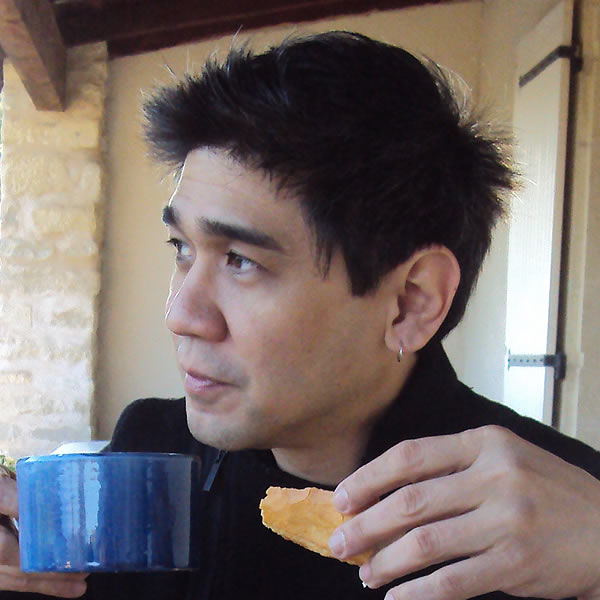
Joby finished his theology courses on doctrine, scripture, liturgy, and catechism from the satellite program of the University of Notre Dame. He is a contributing writer at theCatholicTalks.com, and catholic365.com where some of his articles have been translated into different languages for different websites around the world. He is passionate about suffrage for the souls in purgatory and maintains IndulgenceCooperative.org
He teaches multimedia arts at a prominent arts and design school where he engages students in conversations about religion, spirituality, pop-culture, and food.
Feel free to contact him if you want a talk in your organization.



